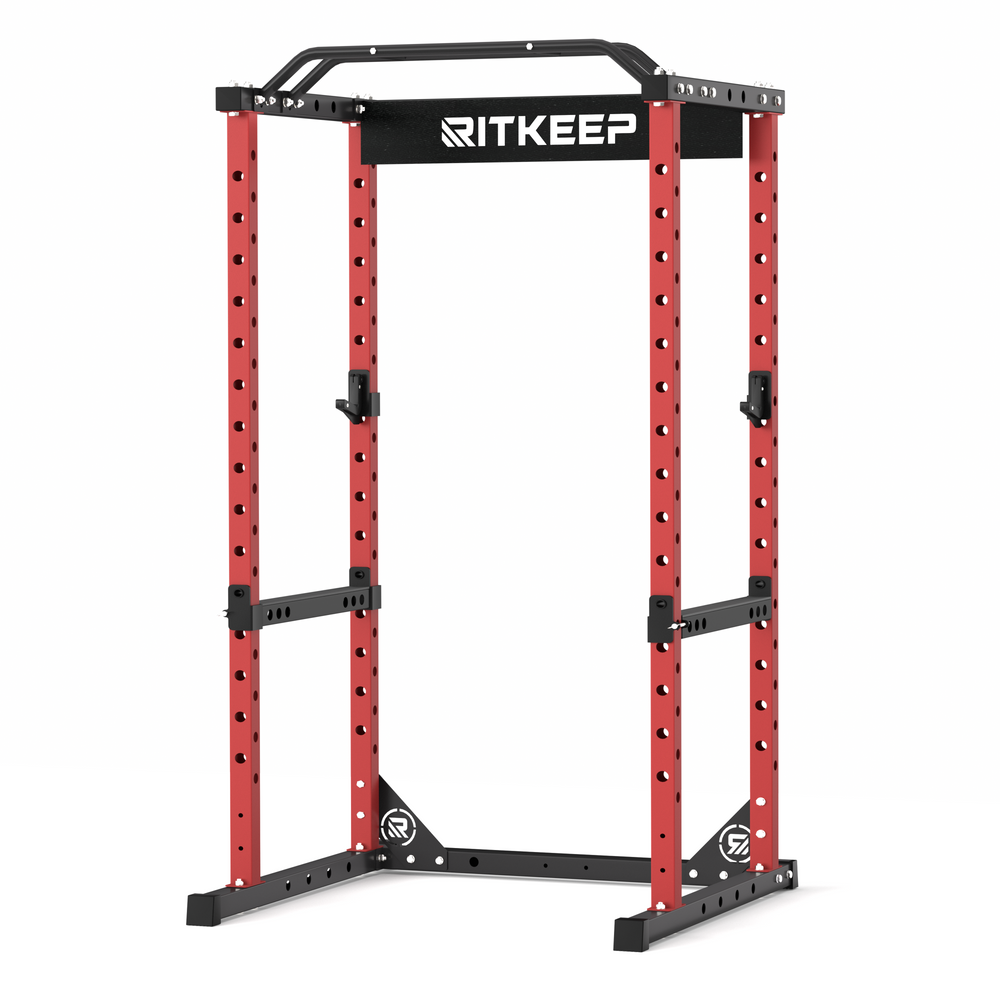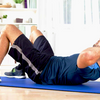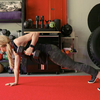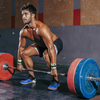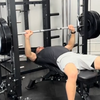Squat Showdown: Smith Machine Squats vs. Barbell Squats - Which Builds More Muscle?
In the world of strength training, squats are often hailed as the "king" of exercises. But with various squat variations available, which one is the most effective for muscle growth? Today, we focus on two of the most popular squat methods: barbell squats and Smith machine squats. By comparing the pros, cons, and actual results of these two squat techniques, we'll uncover which one can help you achieve the greatest muscle gains. Ready for the ultimate squat showdown? Let’s dive in!
Contents:
- What Muscles Are Used for Squats
- Smith Machine Squat
- Barbell Squat
- Barbell Squat vs Smith Machine Squat
- Excels for Squats-RitKeep PMAX 5600 Smith Machine and Barbell Sets
- FAQs about Squats
- Conclusion
What Muscles Are Used for Squats?
Squats are a fundamental exercise that engages a variety of muscles in the lower body and core. Understanding which muscles are activated can help you maximize your workout efficiency and improve your overall strength.
Here’s a breakdown of the primary muscles involved:
- Quadriceps: Located at the front of your thighs, the quadriceps (or "quads") are heavily engaged during squats. They are responsible for extending the knee joint and play a crucial role in both the lowering (eccentric) and lifting (concentric) phases of the squat.
- Hamstrings: The hamstrings, found at the back of your thighs, work in tandem with the quads. They assist in bending the knees and are particularly active during the lowering phase of the squat. They also help stabilize the knee joint.
- Glutes: Your gluteal muscles, especially the gluteus maximus, are key players in squats. These muscles are responsible for hip extension, which is vital for driving the movement upward. Squats are excellent for building and strengthening the glutes.
- Adductors: The adductor muscles, located on the inner thighs, help stabilize the legs and assist with hip adduction. They work to keep your knees in alignment during the squat movement.
- Calves: The calf muscles, including the gastrocnemius and soleus, contribute to ankle stability and mobility. They help you maintain balance and control during both the downward and upward phases of the squat.
- Core Muscles: A strong core is essential for maintaining proper form during squats. The rectus abdominis (abs), obliques, and the transverse abdominis work together to stabilize your spine and keep your torso upright.
- Lower Back: The muscles of the lower back, including the erector spinae, are engaged to keep your spine in a neutral position. They provide support and stability, particularly when lifting heavy weights.

Smith Machine Squat
The Smith machine squat is a popular variation of the traditional squat, utilizing a fixed barbell within a guided track. Whether you're a newbie or a seasoned lifter, the Smith machine squat has something for everyone. Let’s break it down into bite-sized pieces so you can get the most out of your squatting sessions!
a. Smith Machine Squat Technique
- First things first, let's nail that technique. Here's how to do it:
- Setup: Position the bar at shoulder height and set the safety stops just below your lowest squat position. Stand under the bar with your feet shoulder-width apart, toes slightly pointed out.
- Get Under the Bar: Place the bar across your upper traps (not your neck!). Grip the bar slightly wider than shoulder-width.
- Unrack: Rotate the bar to unlock it from the safety hooks.
- Lower Down: Engage your core and lower your body by bending at the hips and knees. Keep your chest up and back straight. Lower until your thighs are parallel to the ground or as low as you comfortably can go.
- Push Back Up: Drive through your heels to straighten your legs and return to the starting position. Keep your hips and shoulders rising together.
- Re-rack: Rotate the bar back onto the hooks at the top. And breathe. You did it!

b. What Muscles Do Smith Machine Squats Work?
- Quads
- Glutes
- Hamstrings
- Calves
- Core
c. Benefits of Smith Machine Squats Why bother with the Smith machine?
- Stability: The guided track keeps things steady.
- Safety: Built-in safety stops reduce the risk of getting pinned under the bar.
- Muscle Isolation: Focus on specific muscles without worrying too much about balancing.
- Versatility: From narrow stance to wide stance, split squats, and more – the Smith machine is your all-in-one squat station.
d. Common Mistakes to Avoid
Mistake 1. Incorrect Foot Position:
Placing your feet too far forward or backward can cause unnecessary strain on your knees or lower back. Ensure your feet are positioned directly under the barbell.
Mistake 2. Excessive Forward Lean:
Leaning too far forward can lead to poor form and increased risk of injury. Keep your chest up and back straight throughout the movement.
Mistake 3. Shallow Squats:
Not squatting deep enough can limit muscle activation and growth. Aim to lower your body until your thighs are parallel to the ground.
Mistake 4. Locked Knees:
Avoid locking your knees at the top of the movement to maintain continuous tension on the muscles and reduce joint stress.
e. Smith Machine Squat Variations Spice up your routine with these variations:
- Narrow Stance Squat: Feet closer together to hit the outer quads.
- Wide Stance Squat: Feet wider than shoulder-width to target inner thighs and glutes.
- Single-Leg Squat: One leg at a time – because why should both legs have all the fun?
- Front Squat: Bar in front of your shoulders for a different kind of challenge (and quad burn).
Barbell Squat
The barbell squat is a staple in any strength training routine, and for good reason. Let’s break down everything you need to know to master this powerhouse move.
a. Barbell Squat Technique
Let’s get those basics down:
- Setup: Load your barbell and set it on a squat rack at shoulder height. Stand with your feet shoulder-width apart and grip the bar just outside your shoulders.
- Get Under the Bar: Duck under the bar, positioning it across your upper traps (remember, not on your neck!). Stand tall and brace your core like you're about to take a punch.
- Unrack: Lift the bar off the rack by straightening your legs and take a couple of steps back.
- Lower Down: Keep your chest proud and back straight. Push your hips back and bend your knees, lowering down like you're sitting in an invisible chair. Aim to get your thighs parallel to the ground.
- Push Back Up: Drive through your heels to stand back up, keeping your chest up and core engaged.
- Re-rack: Carefully step forward and place the bar back onto the rack. Boom, you nailed it!

b. What Muscles Do Barbell Squats Work?
Here’s the muscle crew involved:
- Quads
- Glutes
- Hamstrings
- Calves
- Core
- Lower Back
c. Benefits of Barbell Squats
Why should you love barbell squats? Let me count the ways:
- Full-Body Power: Squats hit multiple muscle groups at once, making them the ultimate full-body exercise.
- Strength Gains: They’re fantastic for building serious strength and power.
- Mobility Magic: Regular squatting can boost your hip, knee, and ankle mobility.
- Functional Fitness: Helps in everyday movements like lifting, climbing, and even getting up from the couch.
- Hormone Boost: Squats can crank up the release of growth hormone and testosterone, aiding muscle growth.
d. Common Mistakes to Avoid
Watch out for these common trip-ups:
Mistake 1. Knees Caving In:
Keep those knees tracking over your toes to avoid unnecessary strain.
Mistake 2. Back Rounding:
Maintain a straight back to protect your spine from injury.
Mistake 3.Shallow Squats:
Don’t cheat yourself—lower down until your thighs are parallel to the ground.
Mistake 4.Heels Lifting:
Keep your heels glued to the floor for stability and power.
Mistake 5. Looking Down:
Keep your eyes forward to maintain proper alignment and avoid tipping forward.
e. Barbell Squat Variations
Mix it up with these awesome squat variations:
- Front Squat: Place the barbell on the front of your shoulders – this shifts focus to your quads and core.
- Overhead Squat: Hold the barbell overhead – it’s a killer for flexibility and shoulder strength.
- Sumo Squat: Take a wide stance with toes pointed out – targets inner thighs and glutes.
- Pause Squat: Pause at the bottom of the squat for a few seconds – increases time under tension for greater gains.
- Box Squat: Squat to a box or bench – helps with depth control and improving form.
Barbell Squat vs Smith Machine Squat
Differences
The key difference between barbell squats and Smith machine squats lies in the type of movement and muscle engagement. Barbell squats use a free-weight barbell, which means you control the movement in all directions, requiring more stabilizer muscles like your core and lower back to keep you balanced, and allowing your body to move in a natural path that can vary based on your unique biomechanics. In contrast, Smith machine squats use a barbell on a fixed track, which only moves up and down in a straight line, offering increased stability and requiring less engagement from stabilizer muscles. This guided path can sometimes feel unnatural and limit the natural movement of your squat.
Pros and Cons for Barbell Squats:
Pros:
- Engages More Muscles: Requires more stabilizer muscles, providing a more comprehensive workout.
- Functional Strength: Mimics natural movements, improving overall functional strength.
- Flexibility in Technique: Allows for slight variations in movement that can adapt to your body’s needs.
Cons:
- Higher Risk of Injury:Without proper form, the risk of injury is higher.
- Requires Spotter: For heavy lifts, having a spotter is advisable for safety.
- Intimidating for Beginners: Can be daunting for those new to lifting.

Pros and Cons for Smith Machine Squat:
Pros:
- Increased Stability: The guided path makes it easier to balance the barbell.
- Safety Features: Built-in safety stops can catch the barbell if you can’t complete a rep.
- Great for Beginners: Easier to learn the basic squat movement without worrying about balance.
Cons:
- Less Muscle Engagement: Stabilizer muscles aren’t as engaged, potentially reducing overall muscle activation.
- Restricted Movement Path: The fixed path can feel unnatural and might not suit everyone’s biomechanics.
- Overreliance: Can create a false sense of confidence, leading to poor form when transitioning to free weights.

Which One Builds More Muscle?
The million-dollar question: Which one builds more muscle? The answer isn’t entirely black and white—it depends on your goals and experience level.
Barbell squats generally build more muscle overall because they engage a wider range of muscles, including stabilizers. They also enhance functional strength and improve balance and coordination, which are crucial for overall muscle development.
Smith machine squats can be beneficial, especially for targeting specific muscle groups and for beginners who need to learn the squat movement. They allow you to lift heavier weights with less fear of balance issues, which can help with hypertrophy (muscle growth) in the targeted muscles like quads and glutes.
Excels for Squats-RitKeep PMAX 5600 Smith Machine and Barbell Sets
When it comes to performing Smith machine squats, the RitKeep PMAX 5600 Smith machine offers unmatched stability and safety. Its precision-engineered guide rails ensure smooth, controlled movements, while built-in safety stops protect you during heavy lifts. It is more than just a squat machine—it integrates six essential strength training stations into one compact unit, including a Power Rack, Functional Trainer, Chin-up Station, Dip Station, and Low Row, providing a versatile, space-efficient solution for a complete workout.

For Barbell Squats, the Colored Bumper Weight Plate Set & Olympic Barbell Package is ideal. This set includes either 230 or 340 LB of colored bumper plates and a 7ft Olympic Standard Barbell. It’s designed for those who are more experienced and want to push their strength training to the next level.
Together, these tools offer versatility and precision, making them perfect for enhancing your Barbell Squats routine and reaching your fitness goals.
FAQs about Squats
Which Is Better: Squat Machine or Barbell Squat?
Barbell squats are generally superior for overall muscle growth and functional strength. They engage more muscle groups, including stabilizers, and improve balance and coordination. Squat machines offer increased stability and are easier for beginners to use, but they don’t engage stabilizer muscles as much. For comprehensive results, incorporating both can be effective.
Is it Good to Squat on a Smith Machine?
Yes, Smith machines are good for beginners or for targeting specific muscles. They provide stability and safety features, making heavy lifting more manageable. However, they limit natural movement and stabilizer muscle engagement. Use them for variety and safety, but also include free-weight squats for a balanced approach.
Is the Smith Machine Squat the Same as the Front Squat?
No, they are different. Smith machine squats use a fixed path, reducing stabilizer muscle activation. Front squats require holding the barbell at the front of your shoulders, shifting the focus to the quads and enhancing core engagement. They also allow for a greater range of motion and functional strength.
Which Is Better, Hack Squat or Barbell Squat?
Barbell squats are better for overall muscle engagement and functional strength due to the involvement of stabilizer muscles. Hack squats isolate the quads and glutes more, providing focused muscle development and reducing the risk of injury due to the machine’s stability. For a well-rounded leg workout, both should be included.
How Often Should I Include Squats in My Workout Routine?
2-3 times per week is optimal for most people. This frequency helps build strength and muscle while allowing time for recovery. Adjust based on your goals, fitness level, and recovery needs, ensuring to balance with other exercises for overall development.
Conclusion
For most lifters, barbell squats offer superior muscle growth due to their engagement of multiple muscle groups and the need for stabilization. However, Smith machine squats are a fantastic option for beginners, those with balance challenges, or anyone looking to target specific muscles or add variety to their routine. Incorporating both into your workout can help you achieve well-rounded strength and muscle development.
And there you have it! The Smith machine squat, demystified and ready for you to conquer. So next time you hit the gym, don’t be shy—give the Smith machine a try and watch those gains roll in! At RitKeep Fitness, we're committed to supporting your fitness journey with top-quality equipment designed to help you reach your goals. Explore our range and experience the difference for yourself. Happy squatting!
Best Home Gym Gear in RitKeep
These are our most popular home gym machines — combining Smith Machine and Power Rack in one. Perfect for both guided and free weight training to support your everyday fitness goals.
PMAX 5600 All-In-One Smith Machine - Integrated Weight System
✔️ 6 IN 1 Gym Station
✔️ With 320 LB Weight Stack On Each Side
✔️ Feel the Burn Through 80+ Exercises
PMAX 4750 Dual Plate Loaded Multi Functional Smith Machine
✔️ Fuel Your Workout with 100+ Exercises
✔️ Dual Independent Pulley System
✔️ Removable Jammer Arms & Leg Extension
Destroyer M10 ALL-IN-ONE Home Gym Power Rack With Pulley System
✔️ Crossover Cable Pulley System
✔️ Heavy-Duty Multi-Functional Rack
✔️ Offering over 80+ exercises




